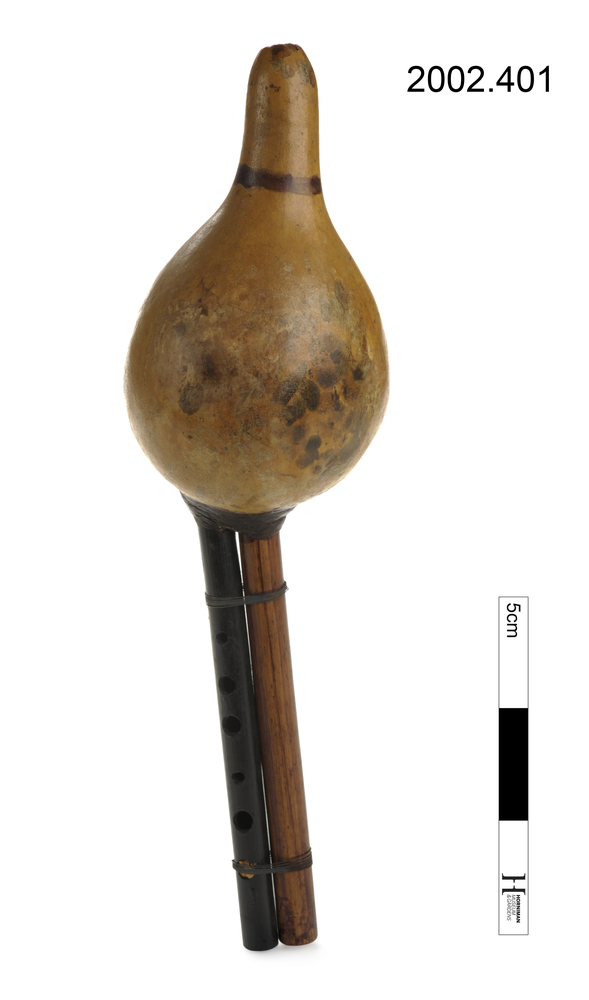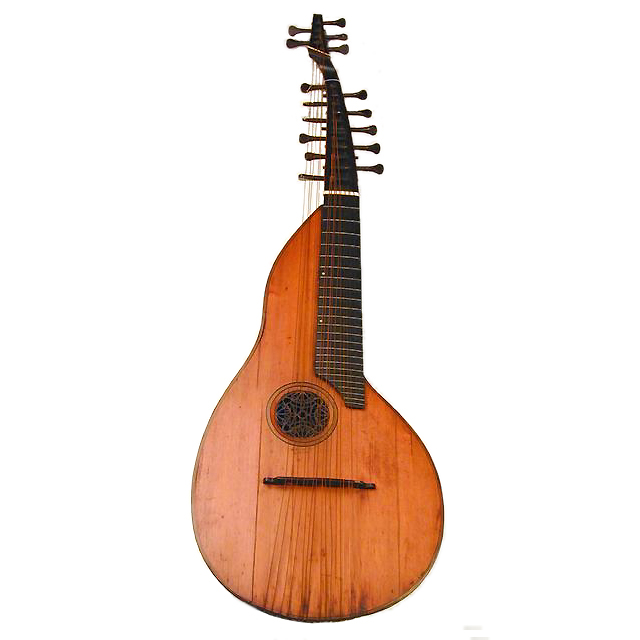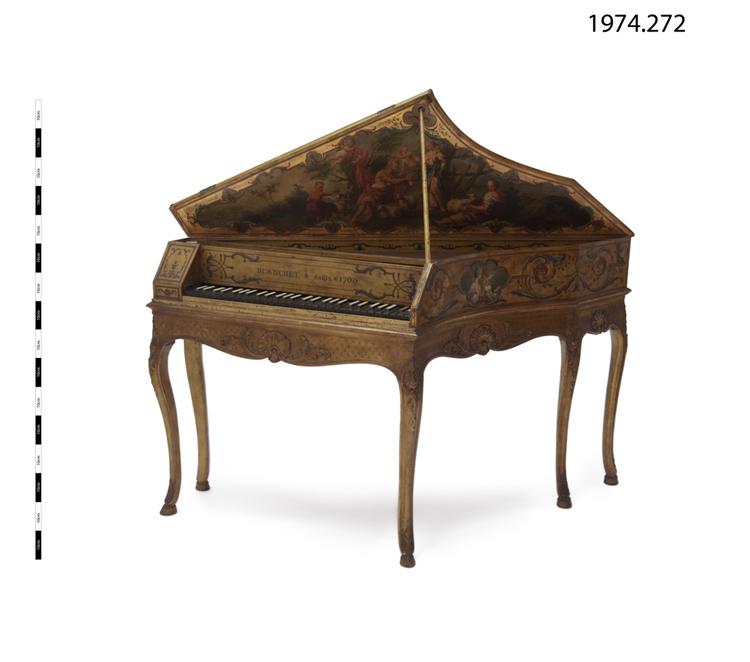
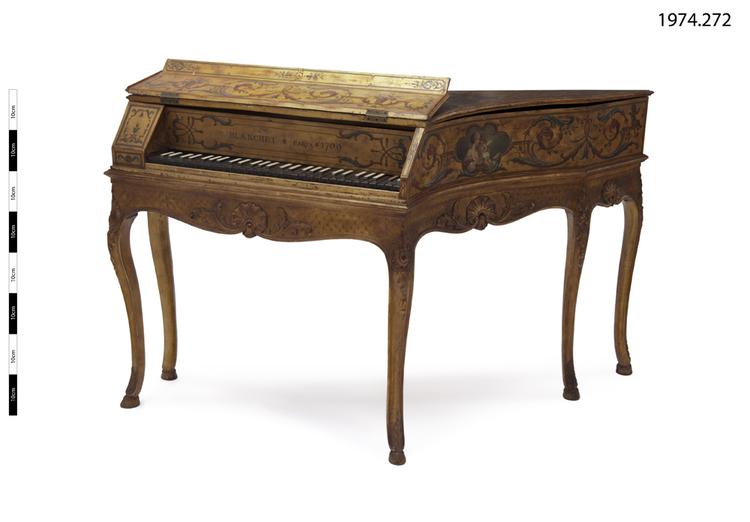
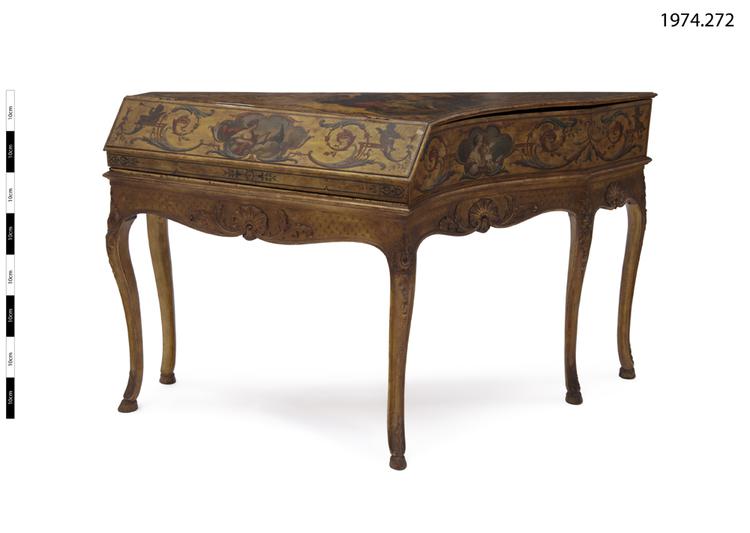
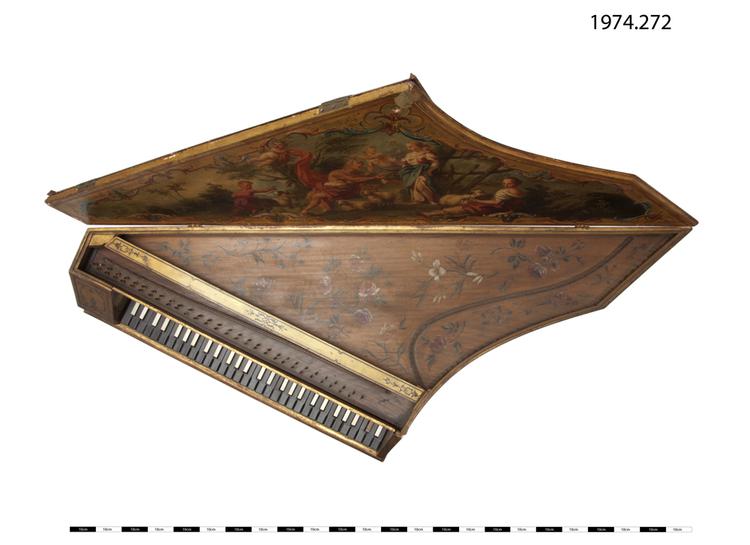
Bentside spinet. GG-e''', chromatic, 58 notes. The original compass was 45 notes, probably C/E short octave - c'''. The inscription by Blanchet suggests that the instrument was voiced using leather plectra ('mise a registre de cuir par Blanchet a Paris 1709') rather than the more usual bird's quill. Although there is also the suggestion that this simply referred to covering the wooden register with leather, perhaps to quieten action noise.
Although few of their instruments survive, the Blanchet family were among the most influential and prolific makers in seventeenth- and eighteenth-century France. Blanchet’s interior inscription confirms that this spinet was given leather plectra rather than the more usual bird’s quill. By 1756, the firm had become harpsichord makers to the King of France. In France, the word spinet or ‘épinette’ signified any small plucked keyboard instrument. As elsewhere in Europe, it could be used on its own or in quiet ensembles. Eighteenth-century French keyboards, in contrast to English ones, often featured painted and gilded finishes. Such lavishly decorated instruments came to symbolise the excesses of the ruling class and many perished during the Revolution together with their aristocratic owners. As a result, surviving examples, such as this one, are comparatively rare.




